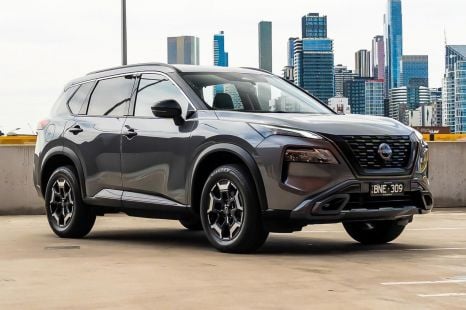

William Stopford
2026 Nissan X-Trail review
42 Minutes Ago
It's not on sale in Australia, but we wanted to know what a week with Toyota's hydrogen fuel cell car would be like. We came away pleasantly surprised.
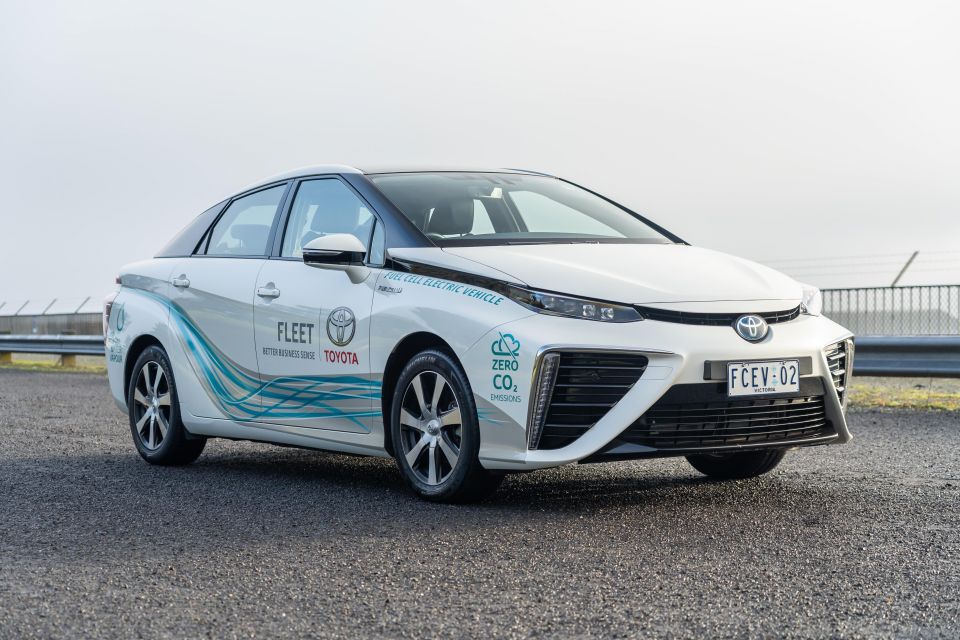


Founder

Founder


Founder

Founder
Where expert car reviews meet expert car buying – CarExpert gives you trusted advice, personalised service and real savings on your next new car.
While hybrid cars are incredibly popular and battery-electric vehicles are gradually growing their foothold in Australia, the one alternative technology in the alternative powertrain realm, hydrogen, remains relatively untouched in Australia.
Unlike hybrid vehicles that are primarily fuelled with petrol, or battery electric vehicles that can be charged with a domestic power plug (among other options), hydrogen-powered vehicles require complex and expensive hydrogen filling stations that are virtually impossible to come by in Australia.
But that doesn’t mean they won’t ever exist. And a lack of infrastructure doesn’t necessarily mean we should discount hydrogen fuel cell vehicles as an alternative to the norm moving forward.
Toyota first imported the Mirai into Australia in 2015 shortly after its launch as a trial, and to get a better understanding of the technology. I remember taking a passenger ride in one back then and thought it was intriguing.
Toyota has since imported several Mirais, with three offered to Hobson’s Bay council in Victoria as a trial, with further trials to follow.
The cars were sitting idle with COVID-19 putting an end to council trials for the moment, so we thought we’d ask if we could borrow one for the week to see what it’s like to live with.
The Toyota Mirai isn’t on sale in Australia, so it’s hard to pin down exactly how much it would cost locally, but we know how much it costs in places such as North America, where it’s on sale publicly.
If you were to buy it in the USA, you’d be forking out just under US$58,000 ($83,000), while in Germany the same car costs just under EUR78,000 ($127,000).


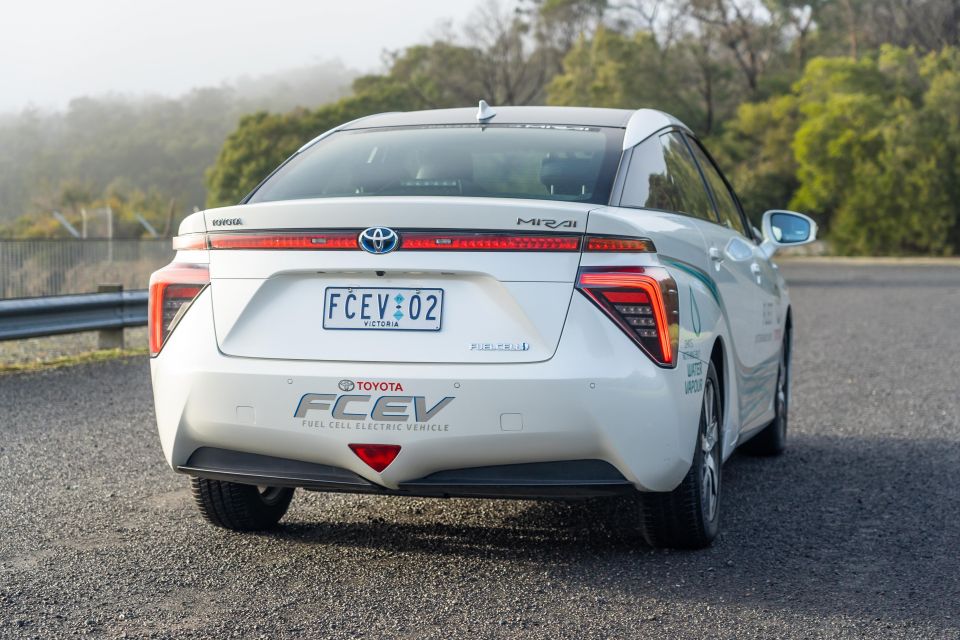
The main reason for the huge price tag is the cost of developing this technology, along with the cost of the expensive materials used to build the fuel stack and hydrogen tanks.
It’s estimated Toyota loses around $80,000 for each vehicle it sells, which is pretty incredible when you think about it. That’s expected to change with the introduction of the 2021 Mirai, which will offer more range and a more conventional design, and its launch will coincide with further expansion of the hydrogen filling network.
Buy your new car without the stress. It's fast, simple and completely free.

Great service from Travis and team, second time I have used this business would not hesitate to recommend them to anyone
Craig C.
Purchased a Ford Ranger in Sunshine Coast, QLD
CarExpert helped Craig save $7,224 on his Ford Ranger, now let us save you on your next new car.
Get your BEST priceThe Mirai is available in a single specification, with only exterior and interior colours choices available for personalisation.
Outside of that, the exterior features 17-inch alloy wheels, LED headlights and tail lights, LED daytime running lights, front and rear parking sensors, a reverse-view camera, and radar cruise control.
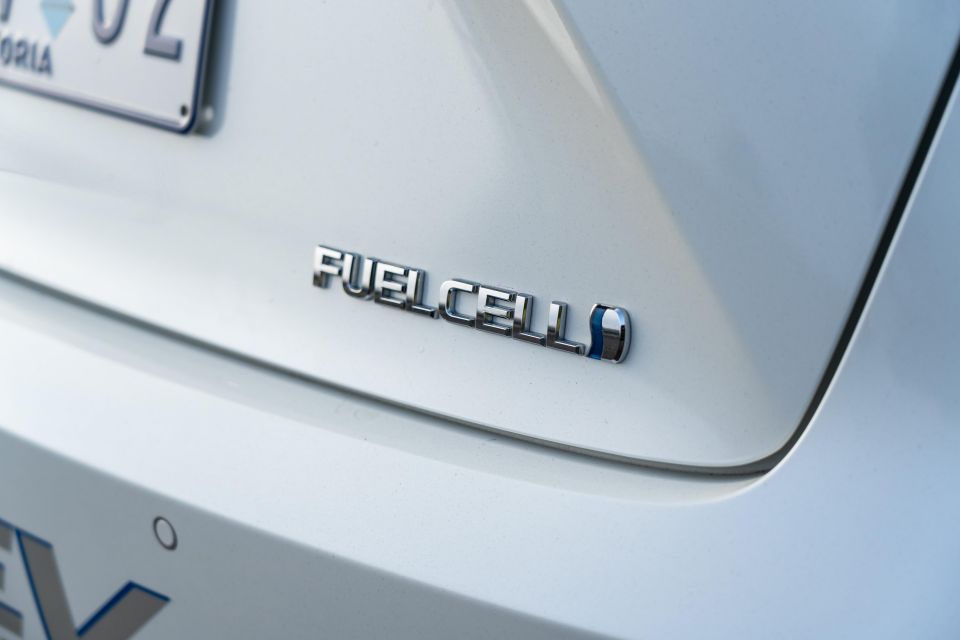
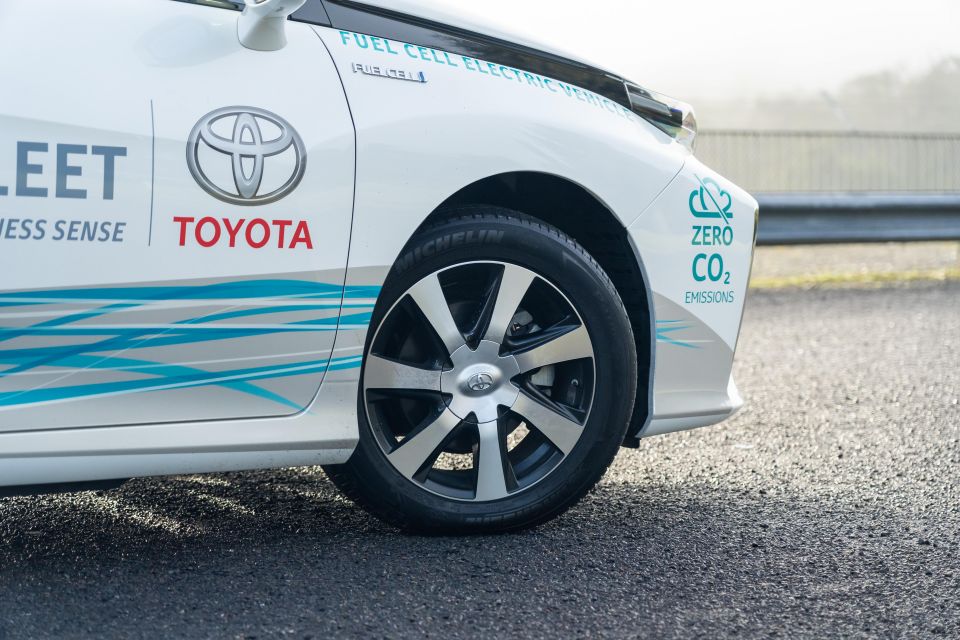
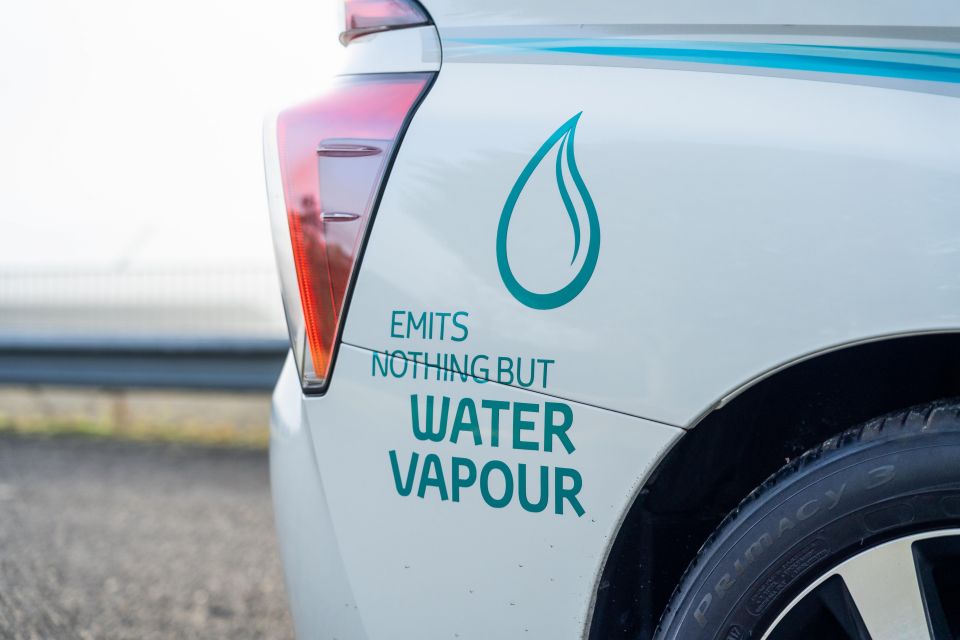

Inside the cabin you’ll find dual-zone climate control, leather seats with electric adjustment and memory, satellite navigation, an auto-dimming rear vision mirror, blind spot monitoring, proximity key entry and start, and a JBL sound system.
It’s also worth noting the exterior of the Mirai boasts a 0.29 coefficient of drag (CoD).
Toyota’s hydrogen car hasn’t been crash tested yet, but it’s worth considering the standard safety equipment, along with the safety of the hydrogen tanks.
Standard safety equipment includes front, side and head airbags, along with all the standard electronic aids you’re used to – such as stability control, traction control, rear cross-traffic alert, and autonomous emergency braking.
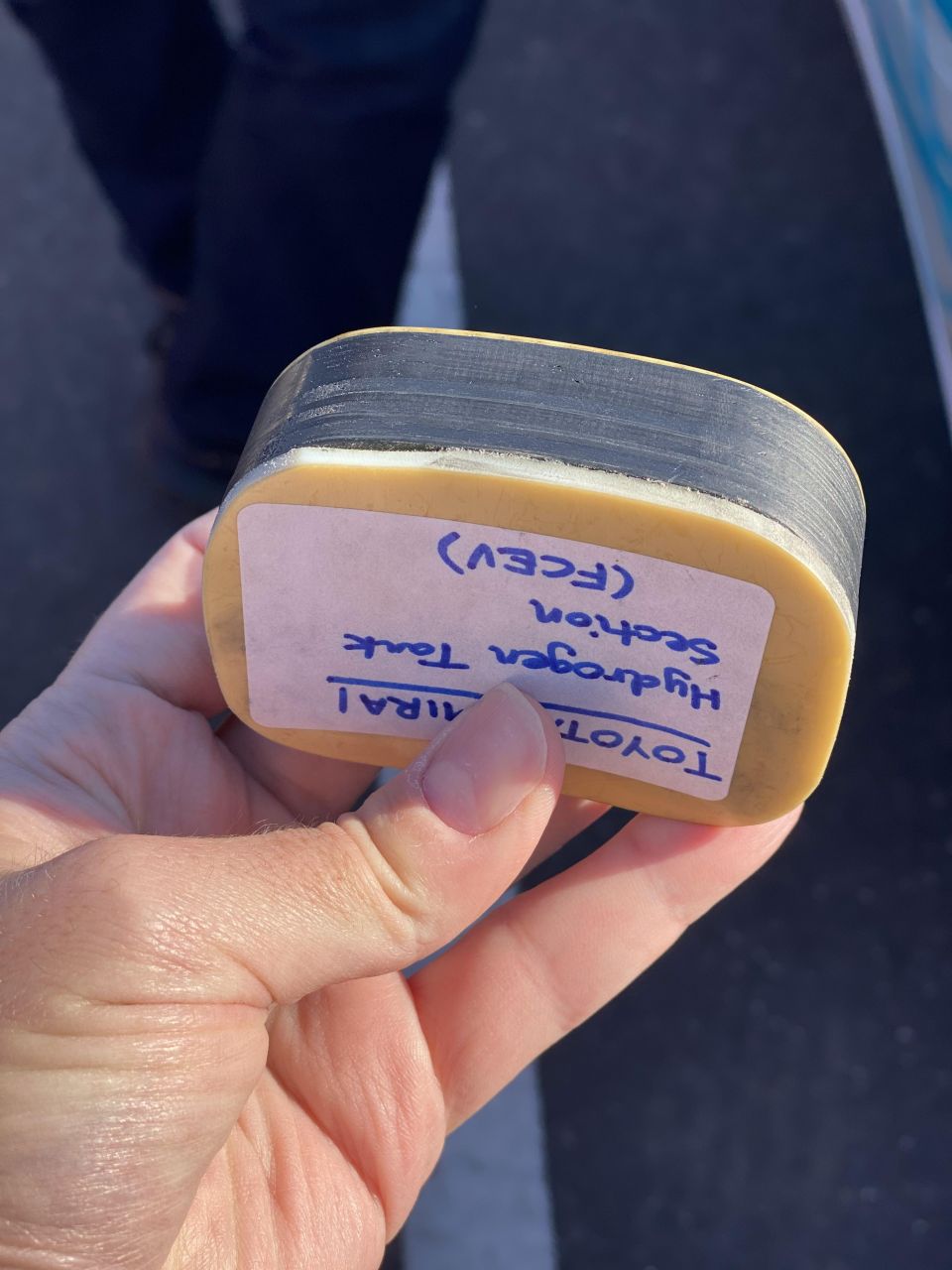
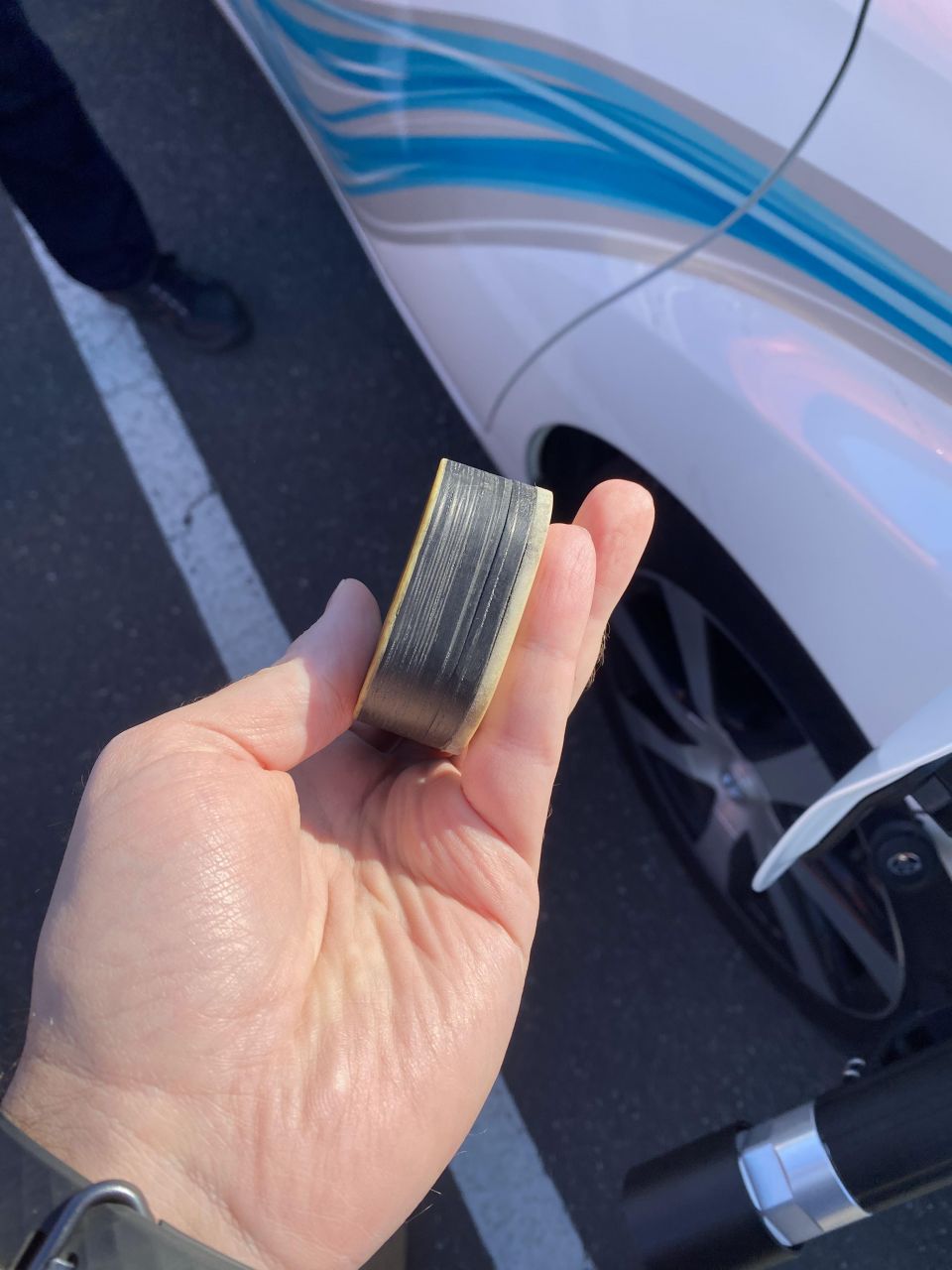
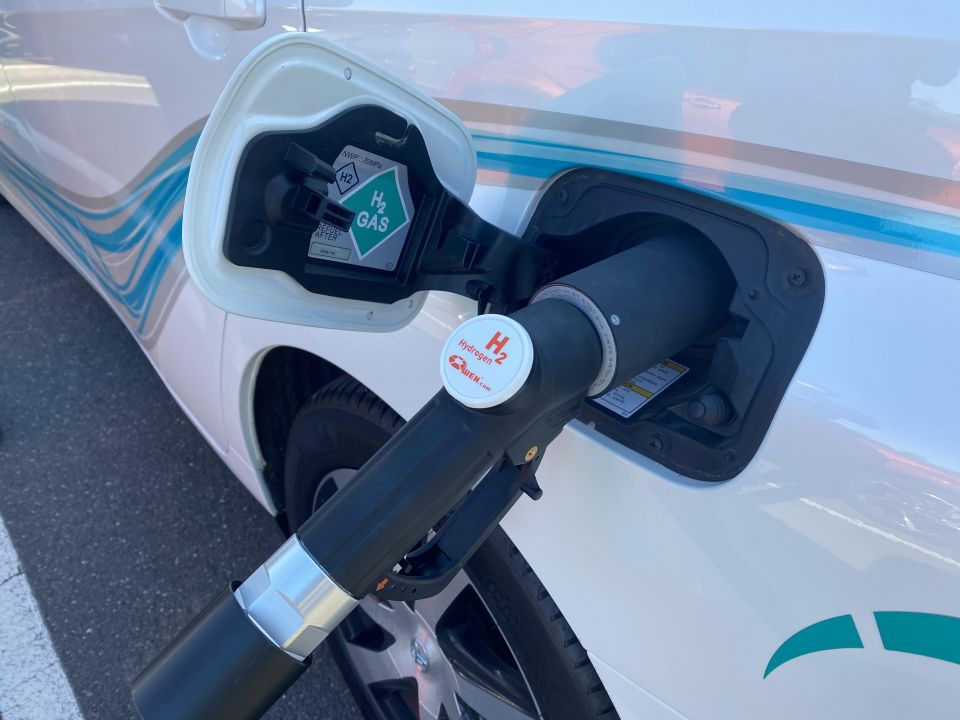
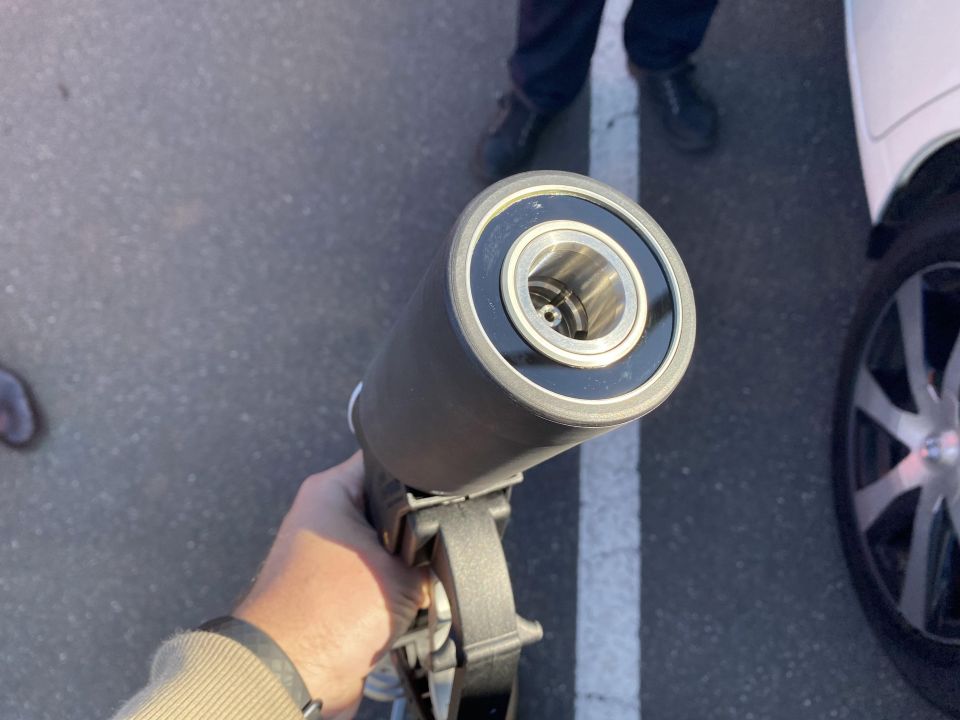
There’s a misconception that hydrogen cars are bombs on wheels, but that isn’t the case.
The Mirai uses two hydrogen tanks to store hydrogen gas, and both of which are pressurised to 10,000psi. To that put into context, a regular can of soft drink is pressurised to around 30psi in the fridge, so there’s significantly more pressure required to store hydrogen.
Hydrogen is extremely flammable and has no odour, colour or flame. When it leaks, you won’t be able to tell. When it’s on fire, you also won’t be able to tell. Unlike petrol or diesel, hydrogen doesn’t pool as a liquid when it leaks.
Hydrogen is around 14 times lighter than air so it dissipates almost immediately when discharged. There’s also significantly less (around three to four times) energy stored within a hydrogen vehicle in comparison to an internal combustion car, which means there’s three or four times less opportunity to ‘fuel’ a fire.
There are a litany of sensors within the car and a number of redundancies in place in the event of a detected hydrogen leak to prevent it from spreading.
Finally there’s the tanks. There’s enough carbon fibre used in the construction of the Mirai’s tanks to build the shell for a supercar. The tanks are so thick they deflected bullets during testing, and two shots in the same location with a 50-cal gun were required to pierce the tank and discharge the hydrogen.
The theory is that if there’s enough energy in a crash to rupture a hydrogen tank, the force of the crash is likely to kill the occupants before a tank opens prematurely. And equally, a crash of similar severity in an internal combustion car is more likely to rupture a fuel tank and cause fire.
Hopefully that gives you insight into why hydrogen cars are safe as – if not safer than – internal combustion cars.
In a word, weird. Toyota’s interiors have come a long way since 2015. If you consider the fact designers begin working on car up to five years in advance, the interior design dates back to 2010.
That’s why there are plenty of angles, lots of piano black, and displays strewn throughout the cabin.
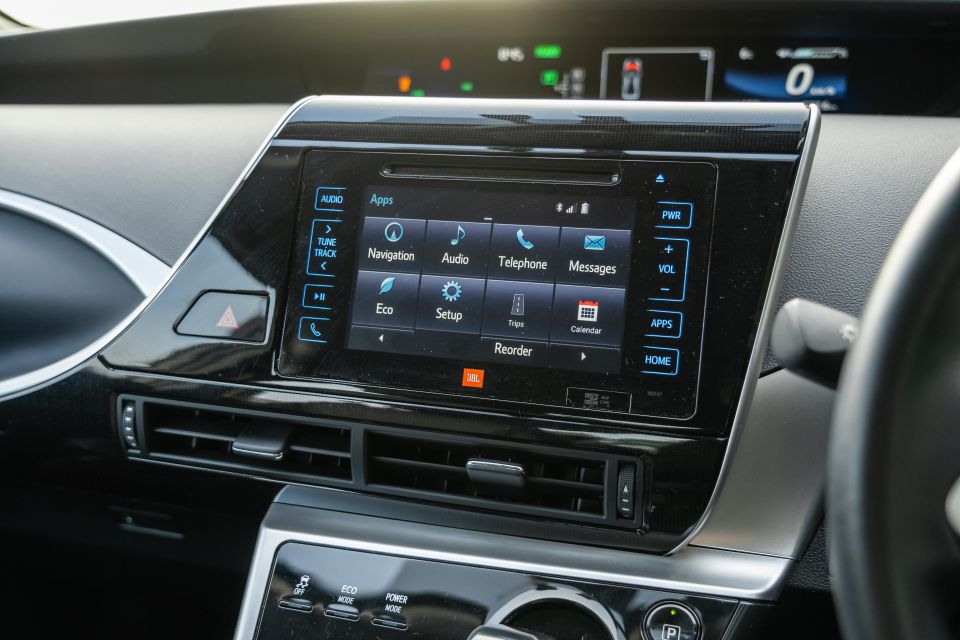
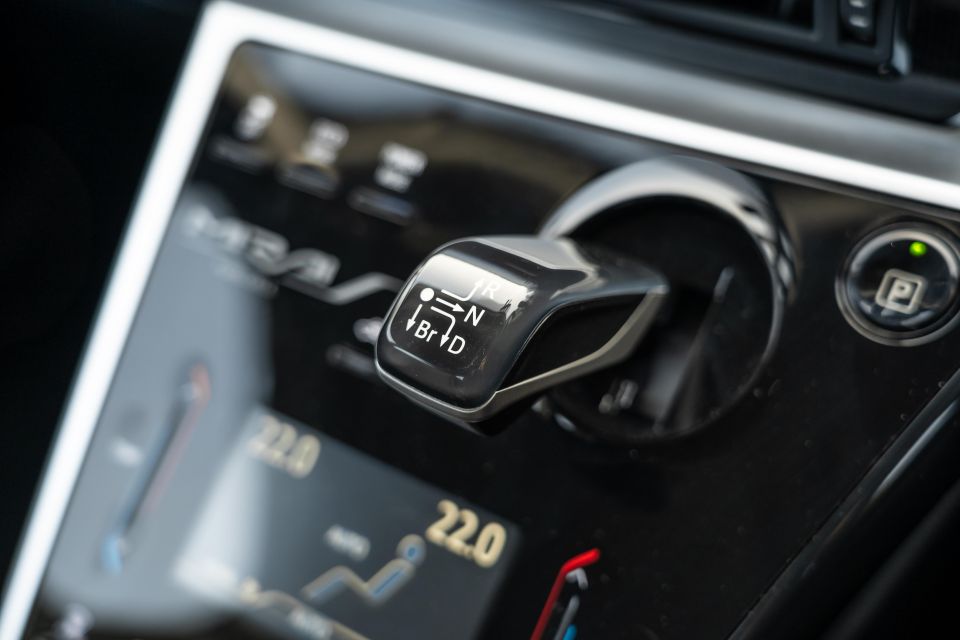
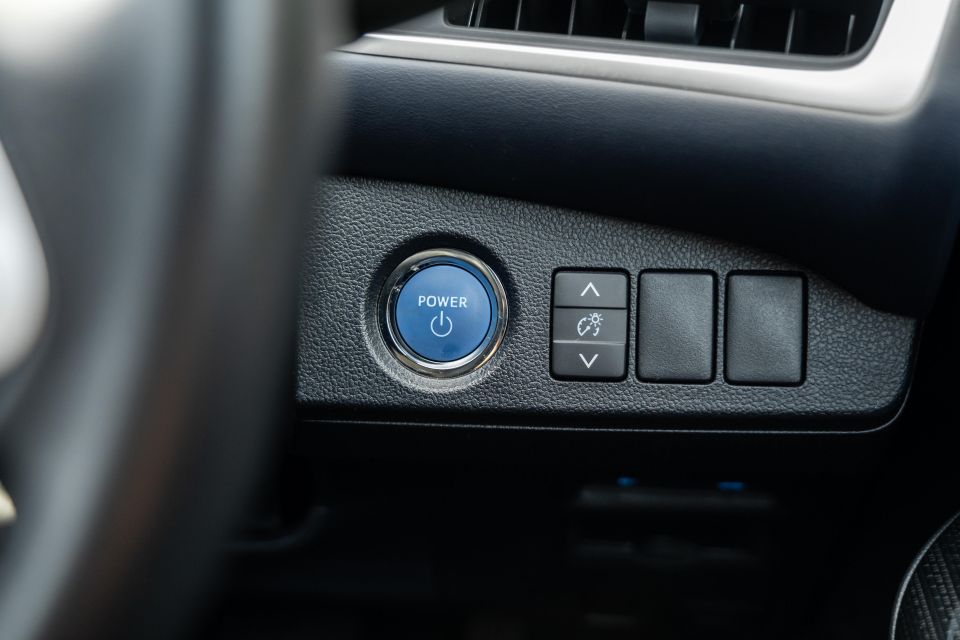
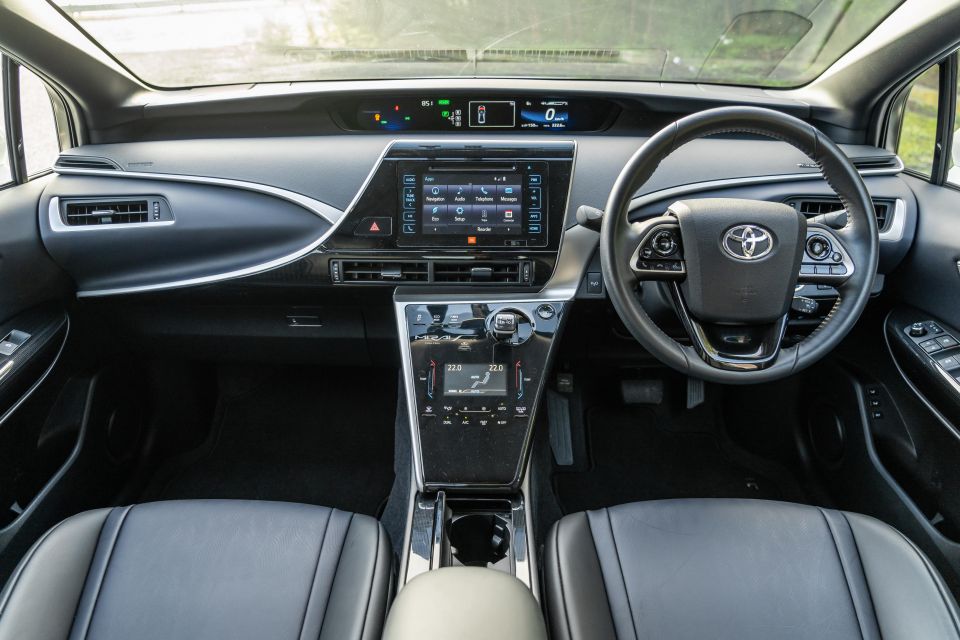
Central to the cabin is an 8.0-inch infotainment system, which is Toyota’s previous-generation unit. As a result, it misses out on smartphone mirroring such as Apple CarPlay and Android Auto.
There’s a secondary screen beneath the infotainment system for climate, with touch-sensitive buttons on each side. Outside of that, you’ll find wireless phone charging within the modest centre console, a couple of cup holders, and a reasonably-sized glove box.
Build quality is good and it’s not hard to see Toyota has put a lot of effort into sound deadening and ensuring everything is put together robustly.
The second row is pretty tight with only two seats available for your passengers. There’s a central arm rest with storage and two cup holders, with the main hydrogen tank sitting beneath second row occupants.
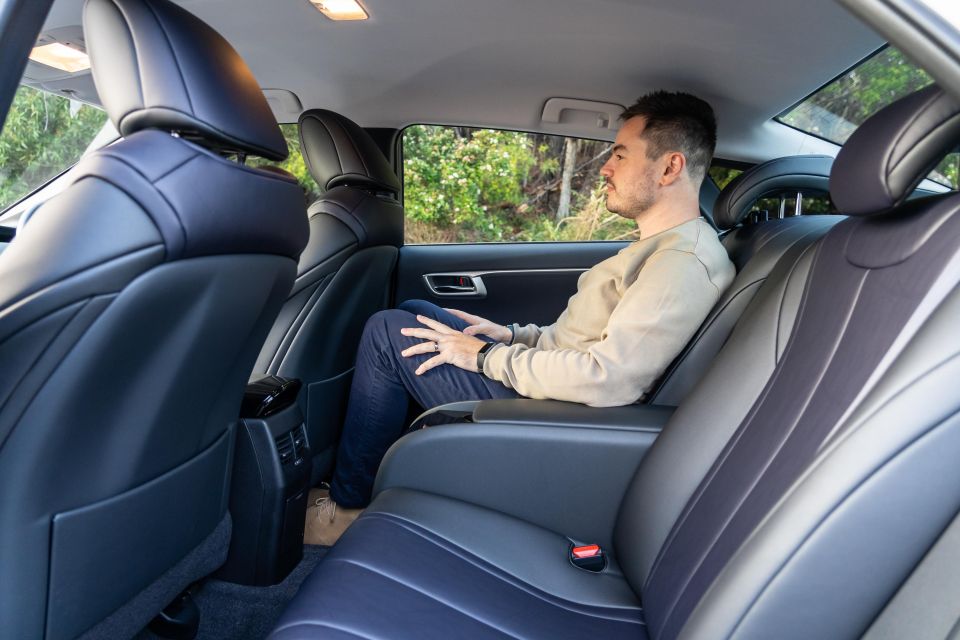

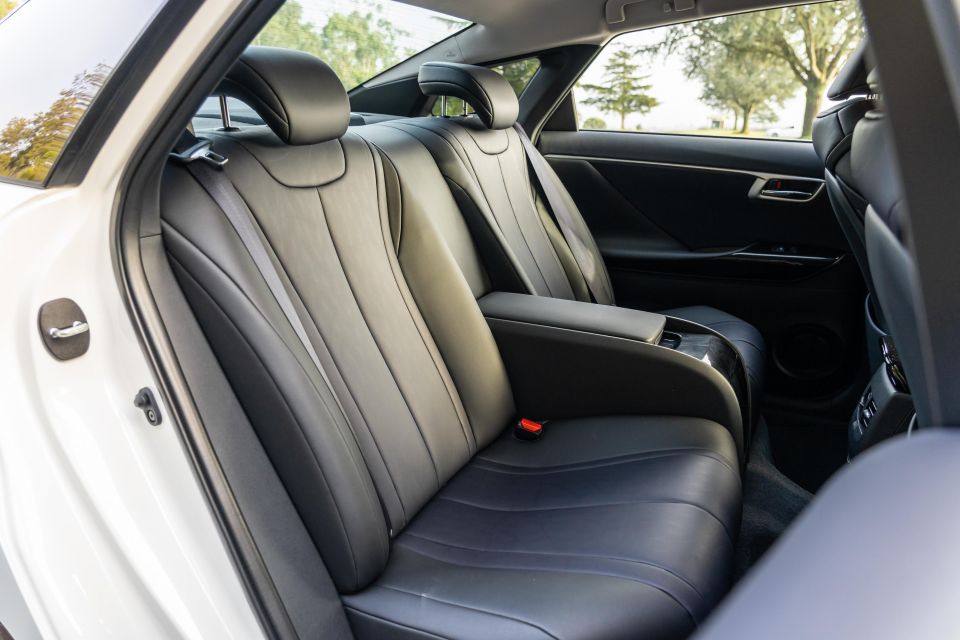
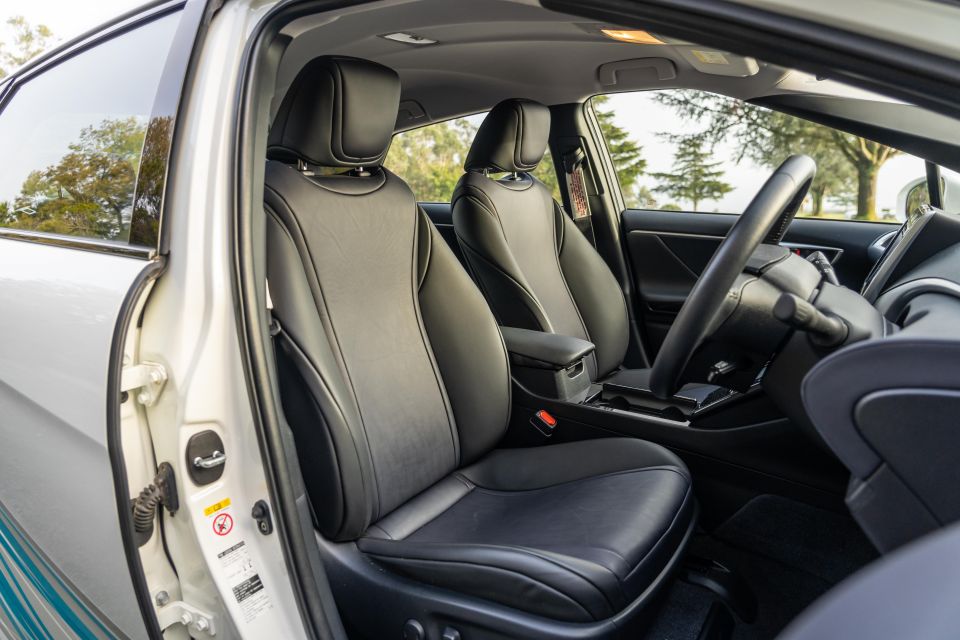
Just behind the second row occupants is the battery cell, which comes in at 1.6kWh and consists of nickel metal hydride batteries.
Cargo space comes in at 360 litres due to the battery equipment just behind the second row. You won’t find a spare tyre beneath the cargo floor, with owners relying on a tyre repair kit when stranded.
The principles behind the operation of a hydrogen car are pretty basic. The hydrogen stored in the tanks enters the fuel cell stack where a chemical reaction occurs between hydrogen and oxygen. The end product is the generation of electricity.
This electricity powers a motor generator driving the front wheels, and also charges the on-board battery pack.


Electricity generated by the fuel cell is primarily used to send torque to the front wheels, while the battery pack is used to supplement torque delivery when the driver demands greater acceleration.
Unlike battery electric vehicles, the Mirai takes around five minutes to fuel from empty using a high-pressure filling station. The Mirai consumes around one kilogram of hydrogen per 100km, with a driving range of up to 500km.
I was expecting the Mirai to feel completely foreign to drive, but the big advantage of this technology is that it doesn’t feel any different to any other car to drive. Torque delivery is quite linear and outside of a whining sound from the fuel cell stack, there isn’t a noticeable noise when driving.
We did around 300km of driving in total, including a highway run, some country driving, and time on a twisty mountain road.
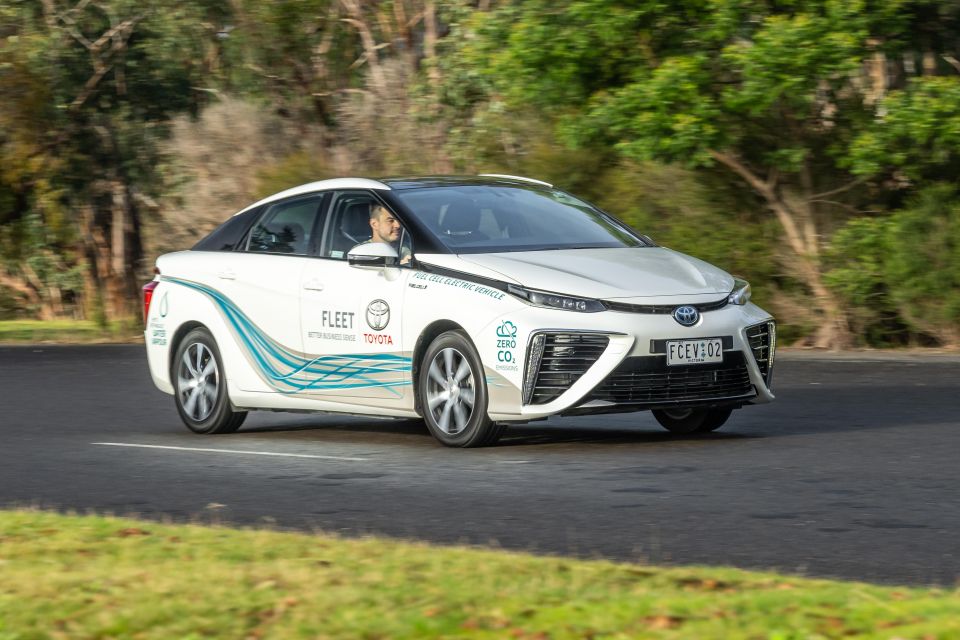
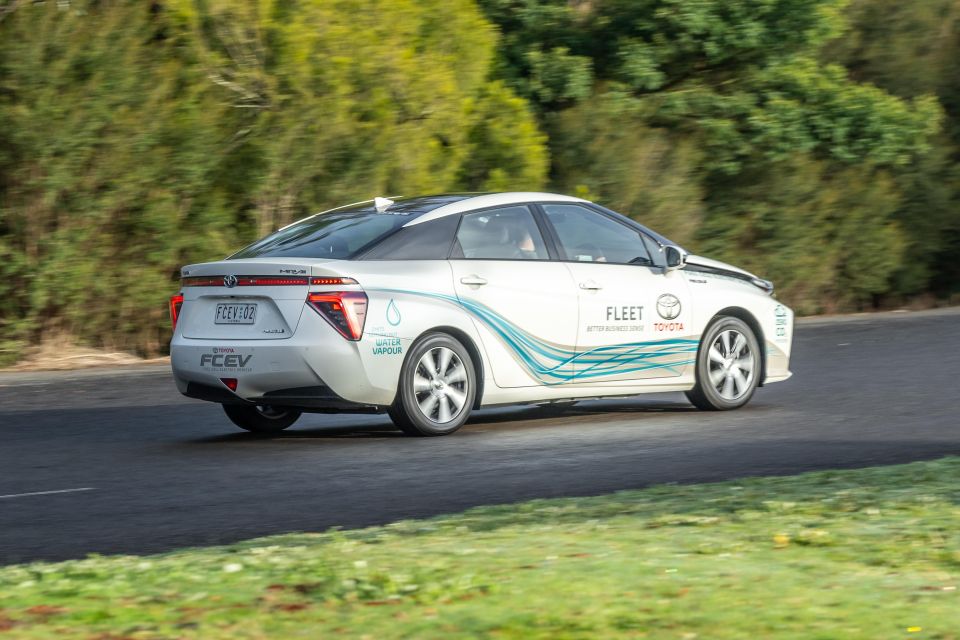
The ride is incredibly soft and cushy – you barely notice any bumps or pot holes and it soaks up highway miles. While cruising on the highway you’ll barely notice a whisper from the fuel cell stack or even the tyres, there’s a heap of sound deadening through the cabin to keep everything quiet.
It’s only when you bury the throttle that you begin hearing any noise. It’s a strange noise to describe, it’s like a distant whine as the Mirai picks up pace. To give you an idea of how quick it is, it moves from 0-100km/h in around nine seconds, although we clocked closer to 12 seconds when tested.
For the most part it’s using the hydrogen fuel cell stack to generate electricity to power the front wheels, with the 1.6kWh battery pack used to fill a torque gap if the driven steps hard on the throttle.
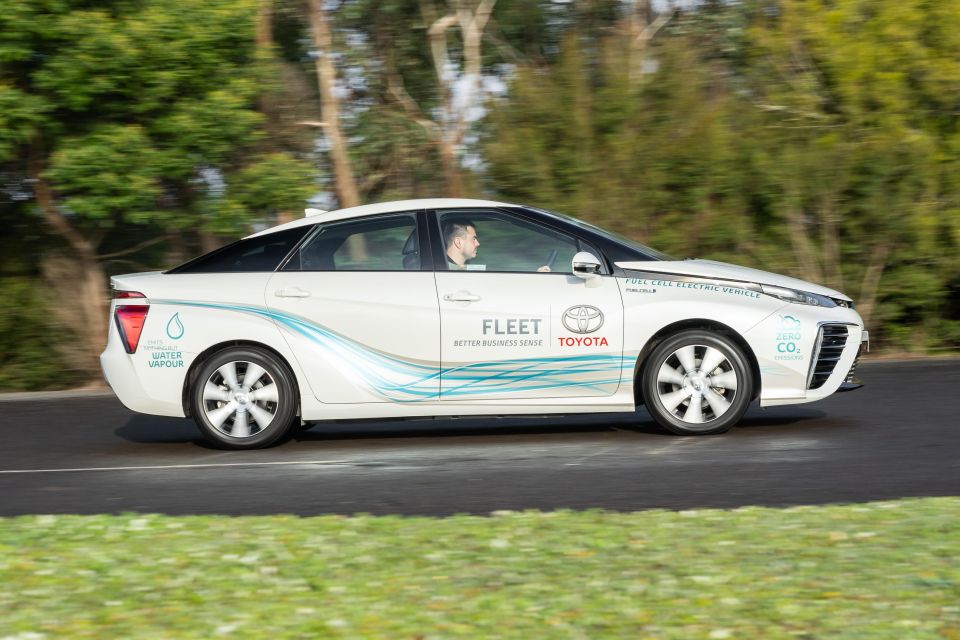
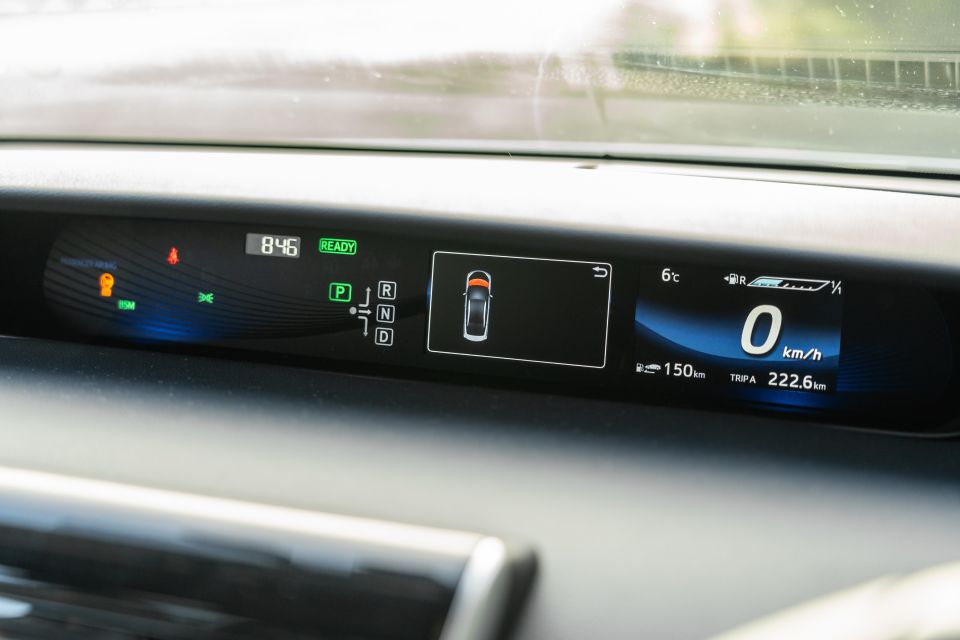
In terms of emissions, the Mirai spits out 6.0 litres of water for every 100km of travel. There’s a manual purge button inside the cabin labelled ‘H2O’ that emptied the lines and spits out any excess water. This is primarily used for cold climates where there’s a chance of water freezing.
In terms of handling, the Mirai is built for comfort more than anything. It’s not the sharpest handling car, and nor does it need to be, with the car happy to float over continuous undulations. Torque delivery is almost instant and it never feels slow or underpowered.
Visibility out of the cabin is good and it’s fairly easy to park with light steering. It’s actually quite a big car, despite what it looks like in pictures. It measures just under 4.9 metres long, which is around 300mm longer than the Prius.
Hydrogen in North America costs around $18 per kilogram, with the Mirai able to store 5kg of hydrogen in total, which would cost around $90 to fuel, with a range of around 500km.
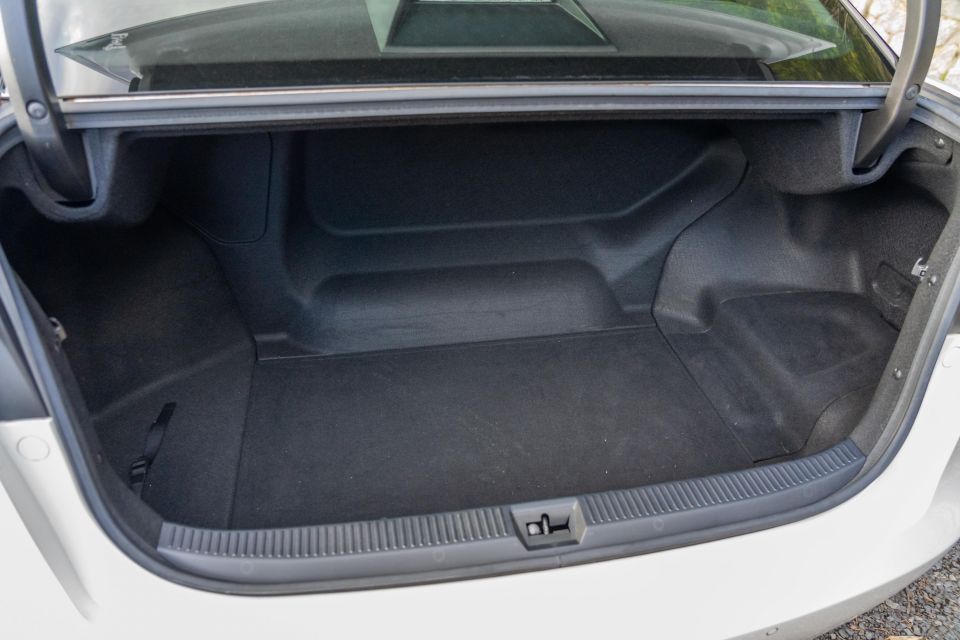
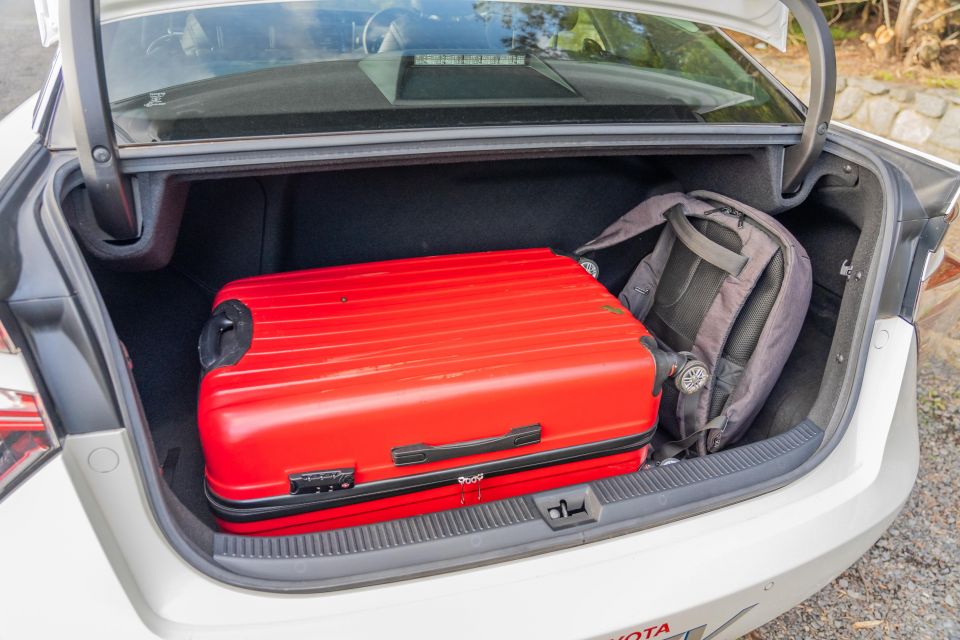
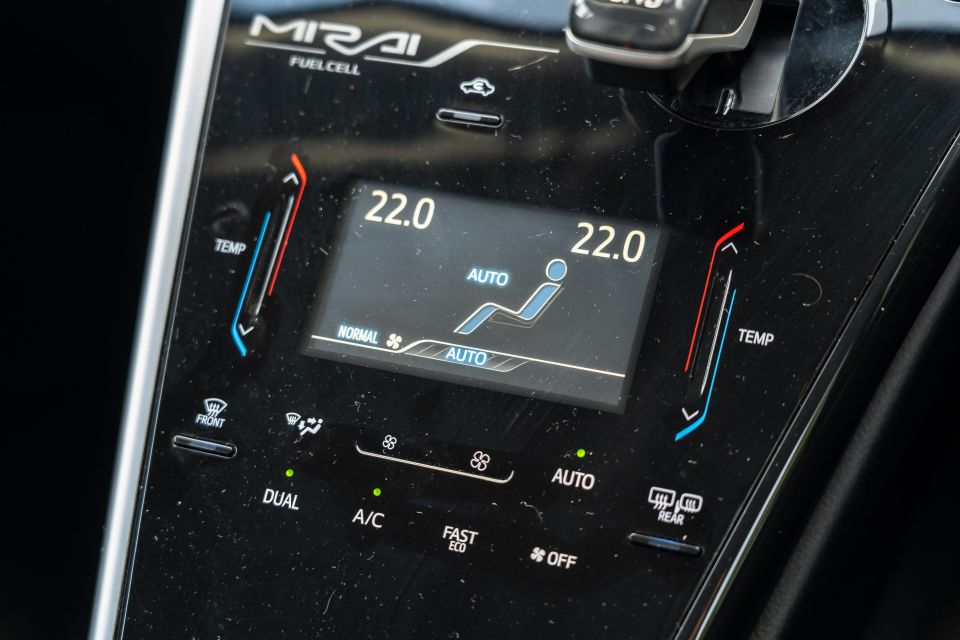
The cost of hydrogen is expected to come down as it becomes more popular and accessible, with experts predicting the price will eventually come down to around $10 per kilogram, or a cost of around $50 to fuel the vehicle.
Buy your new car without the stress. It's fast, simple and completely free.

Great service from Travis and team, second time I have used this business would not hesitate to recommend them to anyone
Craig C.
Purchased a Ford Ranger in Sunshine Coast, QLD
CarExpert helped Craig save $7,224 on his Ford Ranger, now let us save you on your next new car.
Get your BEST priceThe theory behind the hydrogen car is great. It’s quick to fill, appears to be quite safe technology and offers excellent driving range.
On top of that it’s quiet and emissions are limited to just water. The question that needs to be answered is how hydrogen can be generated efficiently.
As it stands, powering a hydrogen car is almost half as efficient as powering a battery electric vehicle. You need to use high amounts of energy and resources to create the electricity that creates the hydrogen and then energy to transport it to refuelling stations. With a battery electric vehicle, you (relatively) simply need to create electricity, which gets plumbed directly into the batteries.

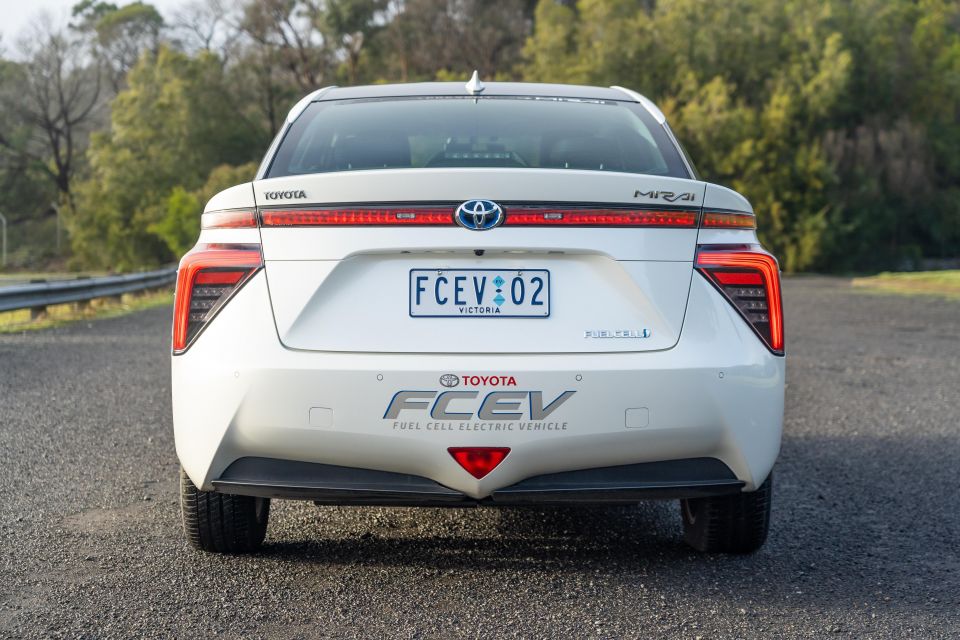

Obviously there are a number of other factors to consider here – such as the production of the vehicle and its components (both for the hydrogen car and the battery electric vehicle), along with the source of the electricity used to generate the hydrogen or the electricity to charge the battery electric vehicle.
But the benefit with both modes of transport is they offer efficient ways to use excess overnight power loads or in the case of hydrogen, effective uses of carbon-neutral energy (such as solar or wind) to perform electrolysis to split hydrogen from oxygen.
Either way, we’re excited for the future and can’t wait to drive the next generation of Toyota’s Mirai, which is due to go on sale next year. It’s unclear whether it will be offered for sale in Australia, or whether Australia will ever get with the program on incentives for industry and buyers to move away from internal combustion cars and for industry to create green energy.
Where expert car reviews meet expert car buying – CarExpert gives you trusted advice, personalised service and real savings on your next new car.
Paul Maric is a CarExpert co-founder and YouTube host, combining engineering expertise with two decades in automotive journalism.


William Stopford
42 Minutes Ago
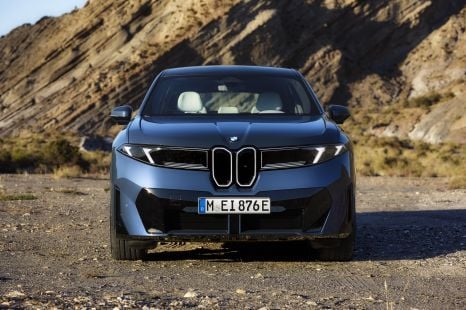

William Stopford
17 Hours Ago
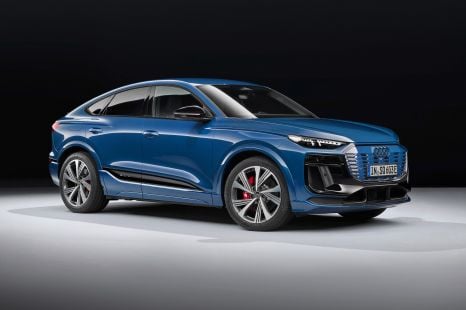

William Stopford
17 Hours Ago
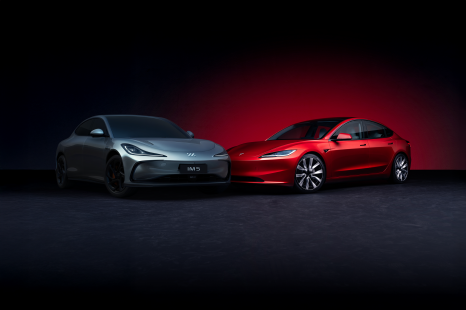

Andrew Maclean
18 Hours Ago


Derek Fung
18 Hours Ago
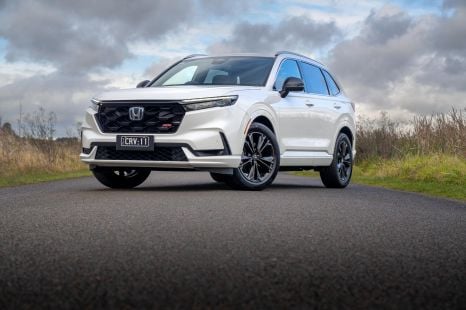

Andrew Maclean
18 Hours Ago